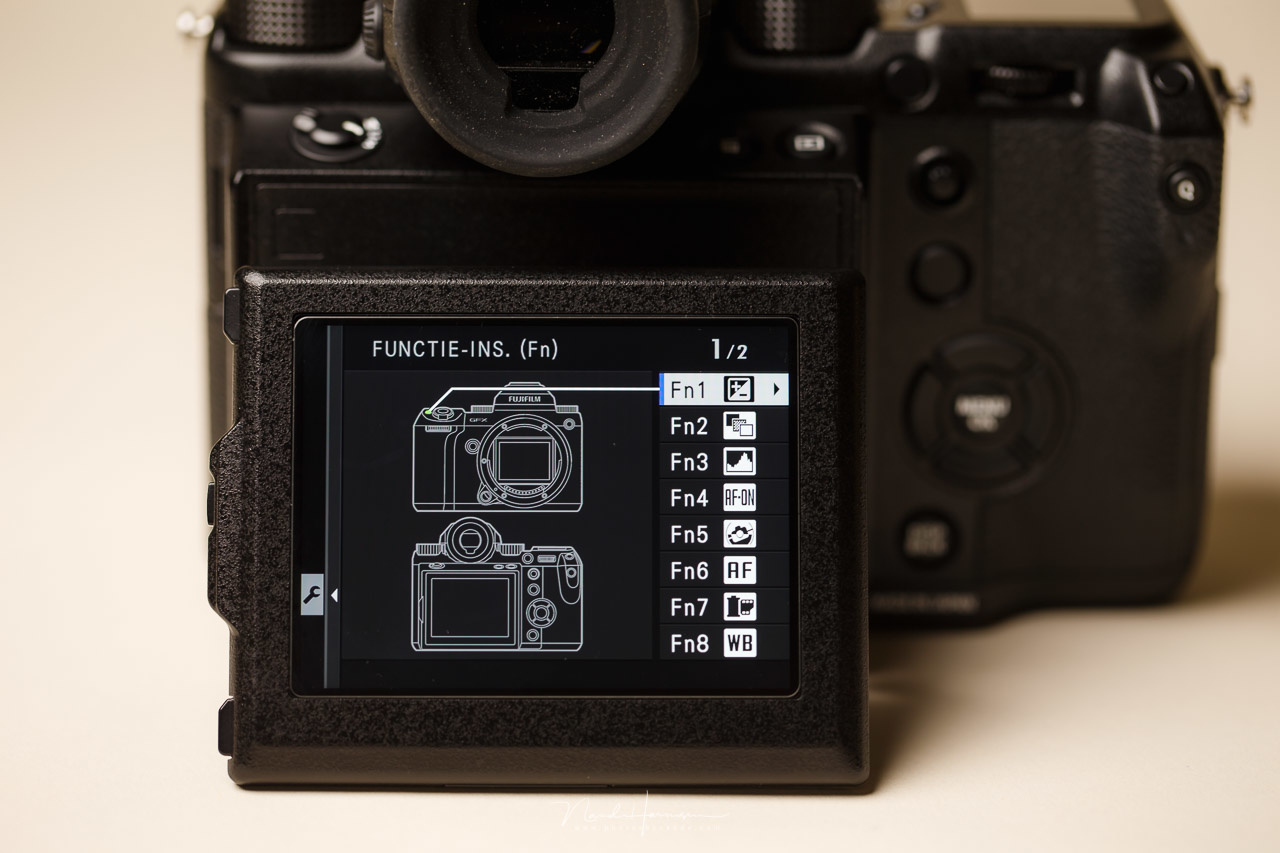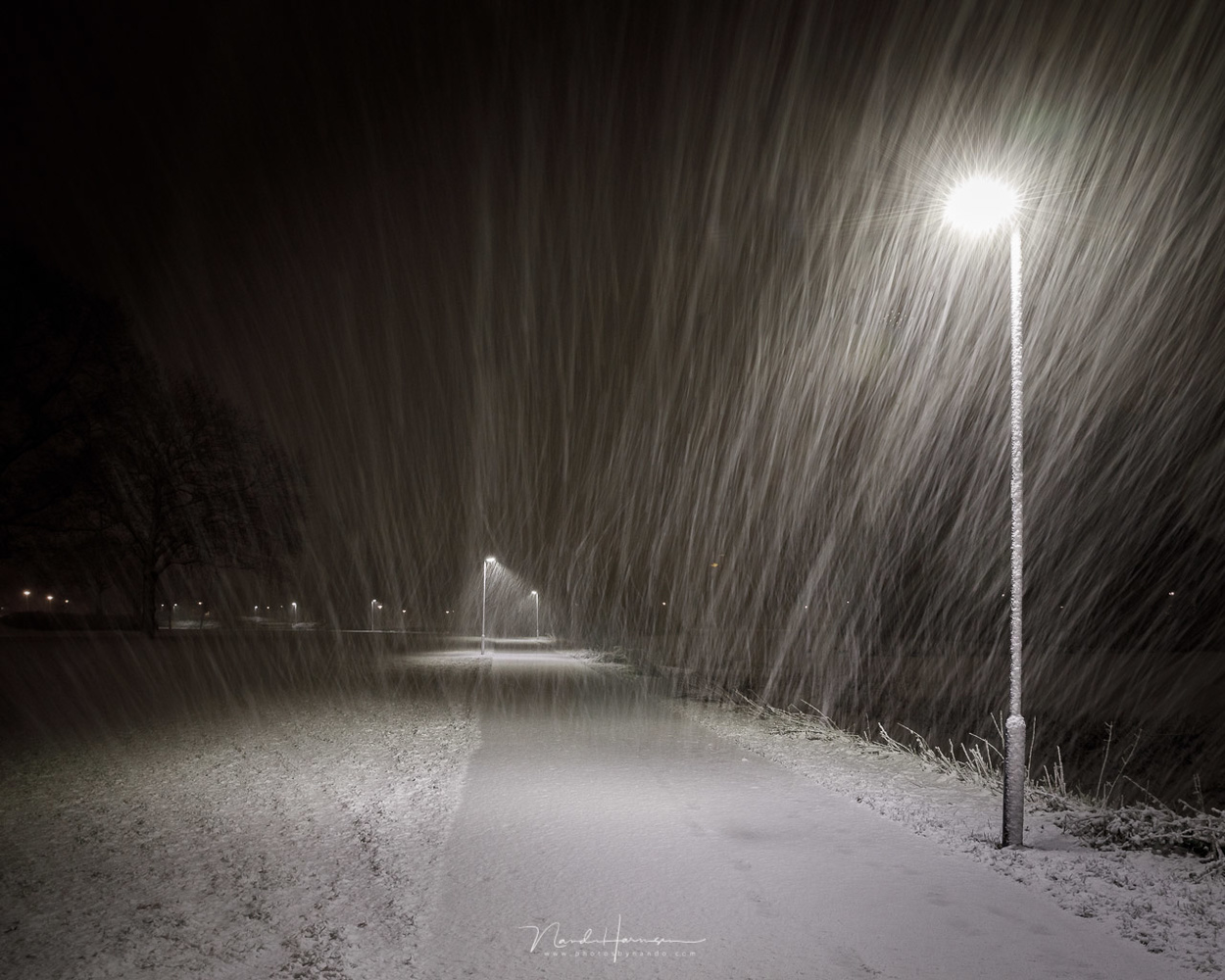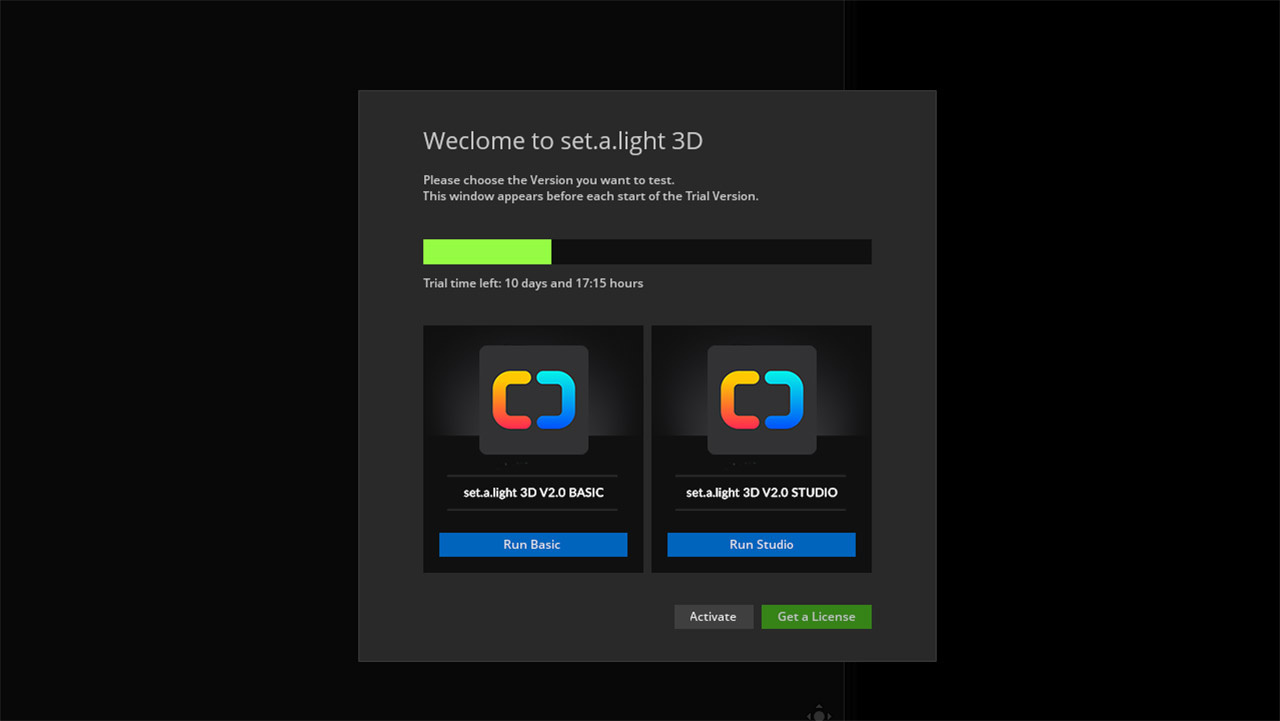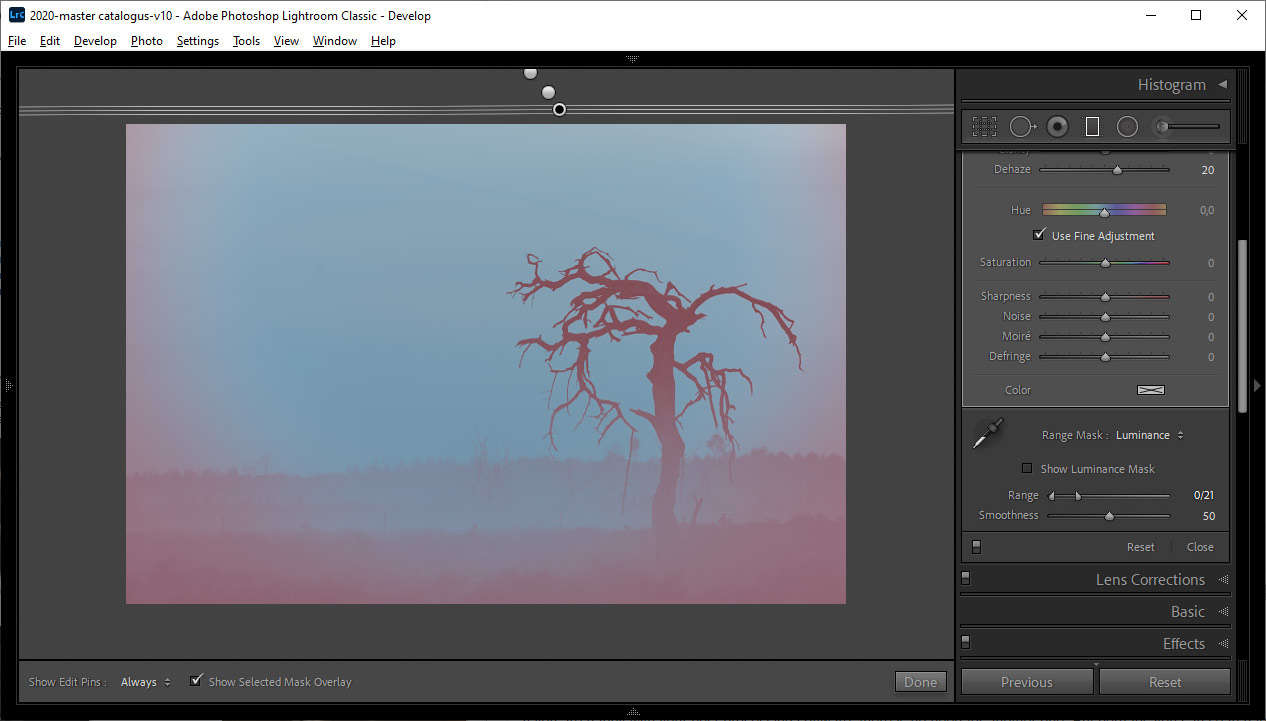There are moments when it's difficult to go out photographing. Perhaps the weather is too bad, or it becomes dark too soon during wintertime. I have a couple of suggestions to spend these periods with less inspiration in a useful way.
Days can be very short during the winter months if you are living above 50 degrees latitude. There is not much daylight and the weather can prevent you from photographing the things you like. This is also a time when inspiration can be low, not knowing what to photograph. Perhaps this is the time to pick up some photography related things that you have postponed for too long.
I have gathered some ideas to get you through the long dark days and evenings, or when inspiration is lost. Some things might not apply to you, but I hope it will trigger some other ideas.
1. Clean up Your Photo Library
If you shoot a lot of photos, your library can get very large. Selecting and rating photos right after import may be good practice. The reality is often very different. A library often contains a lot of photos that were second or third choice. It can even contain photos that have been forgotten in some way.
Looking at the contents of your library is a good thing to do on a regular basis. But often there is not enough time for these things. Postponing this kind of work is way too easy. So why not take up this task during the long dark days and evenings. You could find a long lost gem between these images, who knows.
This is also a time to discard the rejected photos, place photos in albums or collections, and bring order to your catalog. I wrote an article about these things. Perhaps it is interesting to have a look at it if you are using Adobe Lightroom Classic.

Tip 1: clean up your library. This is something you can do on a regular basis. Why not during winter time?
2. Add Keywords and Metadata
One of the most difficult things to do is adding keywords and metadata to your photos. It can also be very difficult to have a good keyword system. Keywords can become a mess after a while, with words that have a wrong spelling, or words that are too general to be usable.
There are nice methods to bring order in your keywords, but you have to dive into this. Try to find your preferable way by searching the net, and set up a good system. So take a glass of wine, put on some nice music, and start working on a good keyword system. You don’t have to get it ready in one evening; that may be an impossible task. But you can spend an hour every day until you are happy with it.
3. Look at Your Older Work
Photography is fun to do, and the digital age makes it very easy to take a lot of photos. Older work may get lost in time with the continuous supply of new photos. The long and dark winter evenings are a good time to look at your older work again.
This can have a lot of benefits. It will not only bring back memories, it will also give a second life to your long-forgotten photos. Perhaps you like to perform a new post-processing method, a great technique you didn’t know back then. Or you can look at the composition and exposure. You can learn a lot by looking at your older work.

Rediscover your older work. Like this one that is over 12 years old. I remember it is used as a cover for a Russian magazine about the Olympic games and kids.
Looking at your early work can also bring new inspiration. Perhaps you would like to shoot a similar type of photo again, or you can compare the old photo with a new one of that same location. But you can also discover how much you have grown in photography throughout the years.
4. Design and Order a Photo Album
It might be a perfect time to catch up with holiday albums. I know how difficult it is to design and order an album with your photos right after a holiday. If you catch up during the cold winter evenings, you might get warm feelings and memories when seeing these photos again.
You can also design and order an album from the best photos of the previous year, or an album with an anthology of your work. Be creative and let your older work come back to life.
5. Make a Slideshow
If you don’t like photo albums, a slideshow may be a good alternative. Take a look at the slideshow option inside Adobe Lightroom Classic. But there are also other options available on the internet if you don't use Lightroom. Search for a good program and compose a nice slideshow. Add a title, text, and search for some appropriate music.
Place your slideshow on websites like YouTube, or you can publish your slideshow on social media. Your work will get attention, and who knows what will come of it.
6. Try New Software
Why not use the time for discovering new software? Perhaps you would like a new kind of post-processing software, or you could try out software with other functionalities. Most software offers a trial period. During the long winter evenings, there is lots of time to try new things out.
7. Try New Post-Processing Methods
If you are happy with your post-processing software, there is no need for another one. But perhaps you can search for new methods for post-processing your photos. New techniques you never thought of can help you achieve a better result. Why not look into this if you have time to spend? The end result can a better understanding of the software you are using.
8. Rediscover Your Camera
Do you know your camera by heart? Of have you set up your camera once, and never looked at it again? You can use the long winter nights to have another look at your camera. Rediscover the options and possibilities.
Looking at your camera has a lot of benefits, especially when you have used your camera for years. During that time you know the cons and restrictions of your camera. Perhaps there is a way to get around the restrictions. Or you may find another workaround that will increase the possibilities. Try new things with your camera. Change settings, and find forgotten options in the menu.

Do you know your camera good enough? Perhaps it is time to see if things could be done in a more efficient way.
9. Check Your Backup System
The safety of your photos is often overlooked. A good backup is very important and can be lifesaving. If you don’t have a good backup system, it might be time to have a look at that. Search for the best solution for you and make sure nothing can happen to your precious photos.
If you have a working backup system, take another good look at it. Does it work properly? Convince yourself and do some testing. Especially when you have a system that works in the background, it is often forgotten because it is working all by itself. It would be terrible if it doesn’t work as intended anymore. If you have some spare time during the winter evenings, that is a good moment to check this.
Do You Have More Ideas and Tips?
These nine ideas are just the tip of the iceberg. Do you have other ideas and tips to spend the days when photography is difficult? Please share your idea in the comments below. The more we all come up with, the better.














Thank you Nando,
This article is like a warm comforting blanket of suggestions, most of which will remind us of good times past, and hopefully good ones to come.
Thanks for another excellent article, Nando!
Indeed, it is hard to feel "inspired" at times. These are good suggestions to stay productive and even continue learning new things!
I always look forward to your articles!
Thank you
Clean and inspect your gear, especially things like straps and tripods, where failure could have expensive consequences. It's also a good time to review your website: Does it have your latest (and best) work? And is the software all up to date?
Good suggestions. Thank you for this addition
Some great ideas Nando... I’m not ready to sort through my photos just yet, I’ve spent about 20hrs in total doing my music so I’ve had enough lol.
Cheap macro photography at home is my suggestion, finding everyday items and learning how to manipulate the light and get the focal plane correct, it helps in wider photography world too. A half decent flash and some LED panels are inexpensive and can help you get creative.
That is a good suggestion.
It is funny. I did this just the other day; playing with a macro lens (for a review), some roses, water, and a couple of flash guns. I agree can also recommend this for anyone who likes to play with light
That’s awesome Nando and exactly the type of project I had in mind:)
My 2 efforts are these two. Took me ages to get them set up how I wanted. The light fall off on the right hand edge of the phone involved some cello tape and A4 paper to create a ghetto soft box :)
Shiny surfaces are a nightmare to photograph. It's the thing that bothers me everytime again when shooting wedding rings on a wedding day. These days are perfect to practice these things also.
Your photos are looking good
Yeah i pretty much went into the shot not having a clue about it, it was really hard to try and get a soft line down the metal surface, i definitely came away from it with a new found respect of product photographers and lots of knowledge about how to manipulate the light. I know its far from perfect but it gave me a starting point. I can imagine a wedding day in general is a nightmare haha, rather you than me:)
small steps...
:)
Nando, congrats on another wonderful and helpful article! I love that you write original content here. That is so much more helpful than just telling us to go watch someone else's YouTube video.
All of your recommendations are appreciated, but #1, #3, and #9 are especially useful, and, to me, those three all go hand-in-hand.
It is extremely important to go back and look through all of one's work on a regular basis, but as you say, it is easy to put off, and it is quite time-consuming. So the wintertime, with its short days, is a perfect time to put extra time into a deep review of our entire photo archives.
And of course when we are looking through all of our old images, that is the most efficient time to make massive deletions. Hindsight allows us to look at our past work more objectively, which makes it easier to decide what we can live without and what we cant.
Thank you for your kind words, Tom.
One thing about throwing away older work... be careful with that. If you delete all the stuff that is not good by your newe standards, you will never be able to look back again, and see the progress you made.
That could be a nice photo album also for on the book shelf.
Nando Harmsen asked,
"These nine ideas are just the tip of the iceberg. Do you have other ideas and tips to spend the days when photography is difficult? Please share your idea in the comments below. The more we all come up with, the better."
You sure are right when you say that these 9 tips are just the tip of the iceberg!
As a wildlife photographer, planning and preparation actually take more time and effort than the photography itself. So I spend the long winter months planning and preparing for the upcoming opportunities that spring and summer will provide.
I have long wanted to get serious about photographing herps (reptiles and amphibians). So I am putting literally hundreds of hours into learning all I can about snakes and lizards in southern Arizona, and planning a road trip to go photograph them in April, when conditions are right. I plan for the trip to take three weeks, and believe me, when one is going to be on the road photographing for three weeks, there is a LOT of planning to do!
Some of the planning and preparing tasks for this trip are:
Contacting folks at the Tucson Herpetological Society to ask about reptile and amphibian opportunities in their area.
Studying the THS website, which has a very informative write-up on every species of reptile and amphibian that is found in Arizona.
Searching YouTube for documentary videos about each one of the species that I am interested in finding and photographing when I am there.
Searching Instagram for people who have posted high quality photos of Arizona's herps. Then I write messages to all of those people, and ask if they are willing to share any species-specific location information. Some of these people offer to take me out herping with them when I am down there. Instagram is an EXTREMELY valuable resource when used to connect with others that can mentor me.
Studying road maps of southern Arizona, so that I can get familiar with the lay of the land and develop a fair working knowledge of the distances between various places.
Searching the internet for all of the info I can find about the life history of the Gila Monster, a target species. Reading Gila Monster anecdotes, and contacting people who have experience with conducting Gila Monster research.
Searching the internet for universities in Arizona, and then contacting people in their wildlife biology departments, particularly those whose area of specialty is reptiles and amphibians.
Searching the internet to find campgrounds and inexpensive hostels and motels in southern Arizona. If I know what my accommodations will be like, then I can better pack and prepare for the expedition.
Searching the internet for photos of Arizona's reptiles and amphibians. I study the images that I find, to get a better idea of what the photographic opportunities will be like, and also to see what kinds of images are especially plentiful, and what types of images there aren't enough of.
By doing this, I have already learned that many of the better opportunities with some snake species will be at night, and that if I want to take advantage of these opportunities, I will need to invest in some sort of artificial light like a flash or something.
I have also learned that there are very few true environmental portraits of Gila Monsters, that showcase their surrounding habitat in a masterful way. So I know to look for opportunities to take these kinds of images if I am fortunate enough to find a Gila Monster.
There is SO MUCH MORE research and planning that is going into this trip, but I am afraid that if I keep writing about it, there will be so many paragraphs that no one will bother to read any of it. So I'll leave it where it is now.
Just know that any time you plan a big photo trip, you can spend, literally, hundreds of hours preparing for that trip, and the more you prepare, the better photos you will get. This is what keeps me going all through the winter months!
By the time summer is upon us, you'll be an expert without doubt. Keep up the good work :)
You're a class act, Nando. I appreciate your words of encouragement.
Thanks. This article hit the sweet spot. Both for it being a good list as well as a reminder that though I had come up with them individually, this serves as a reminder to get off my ass and get moving. 3TB HD space already saved. Creating a photo book next!